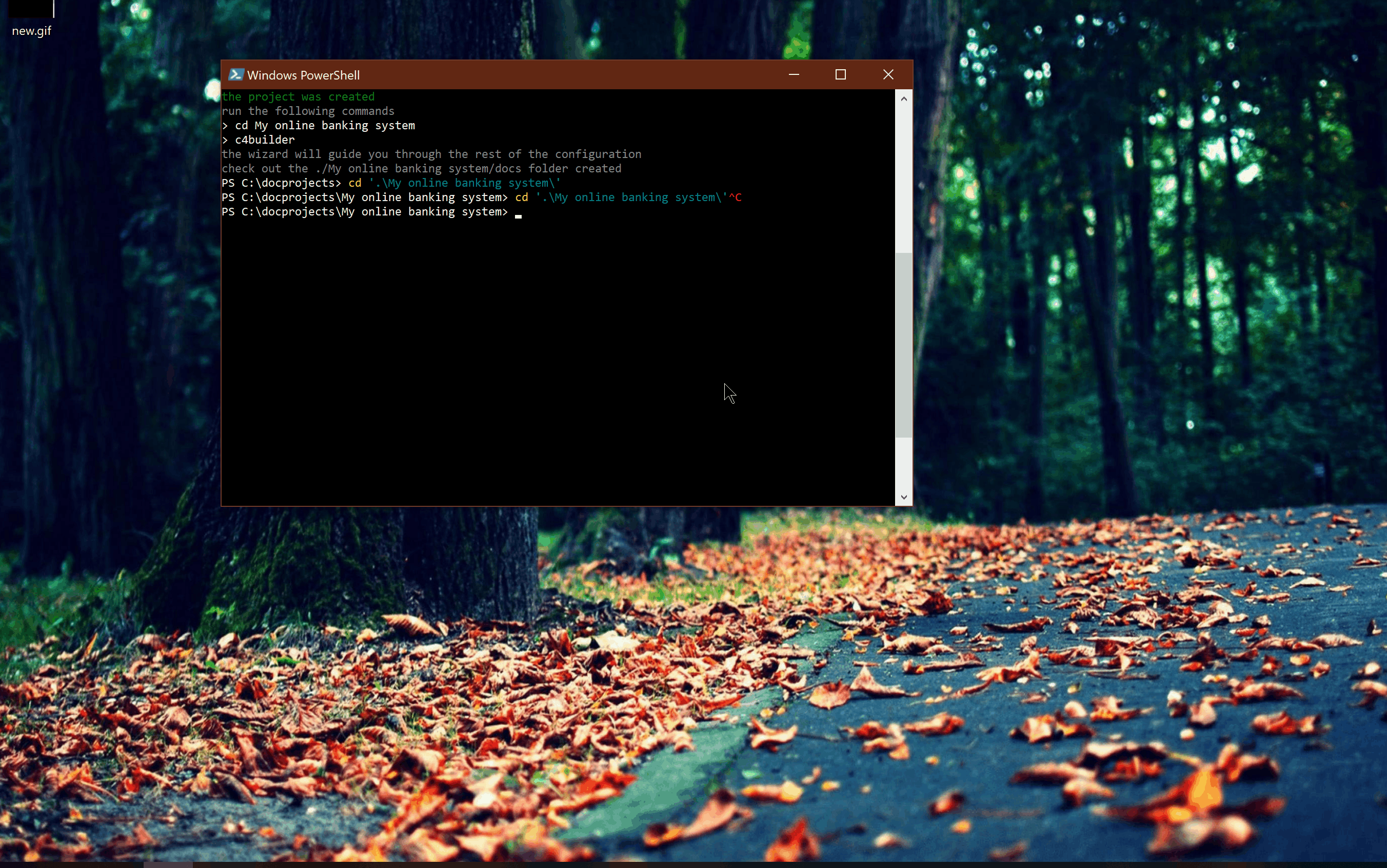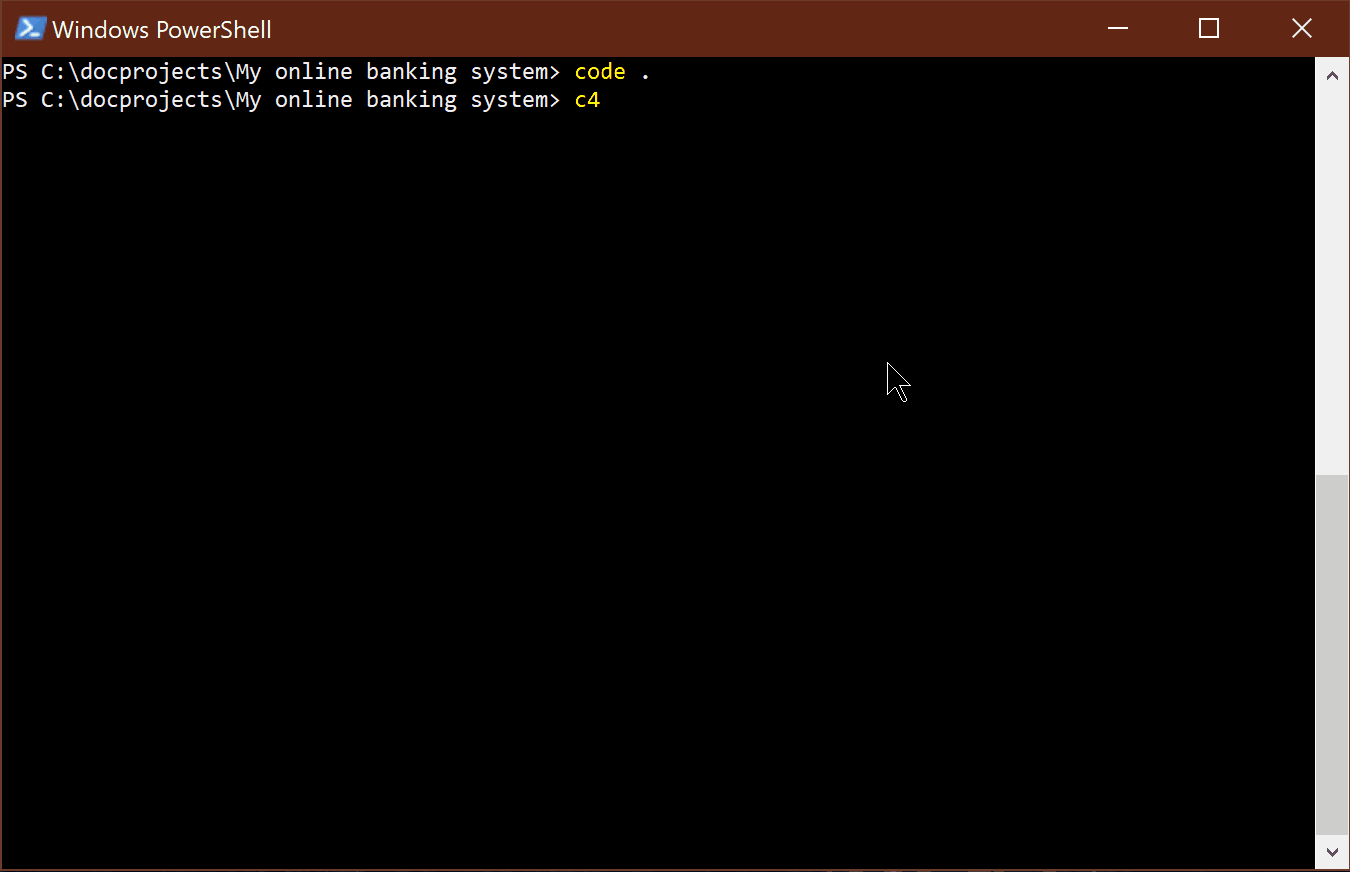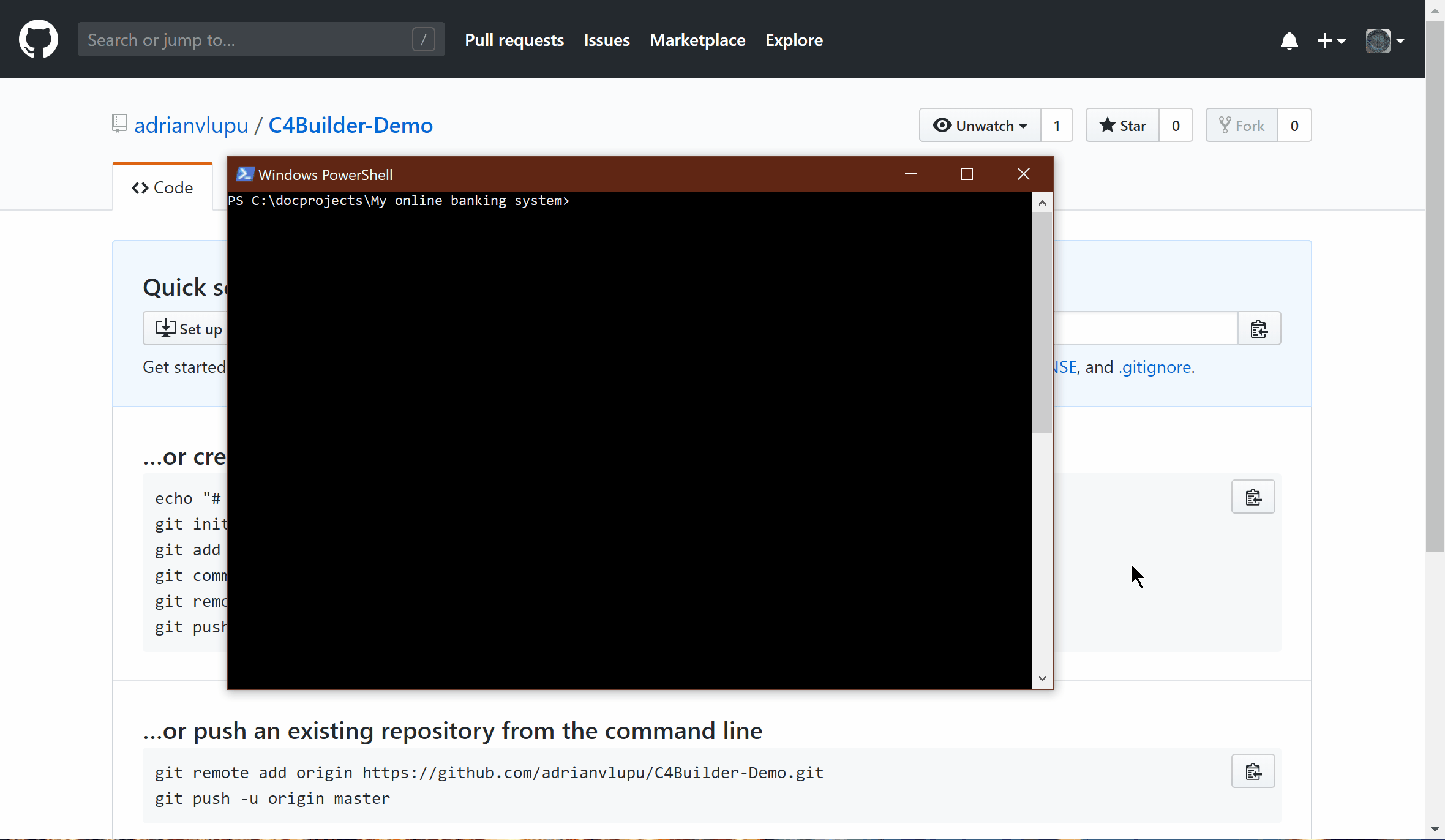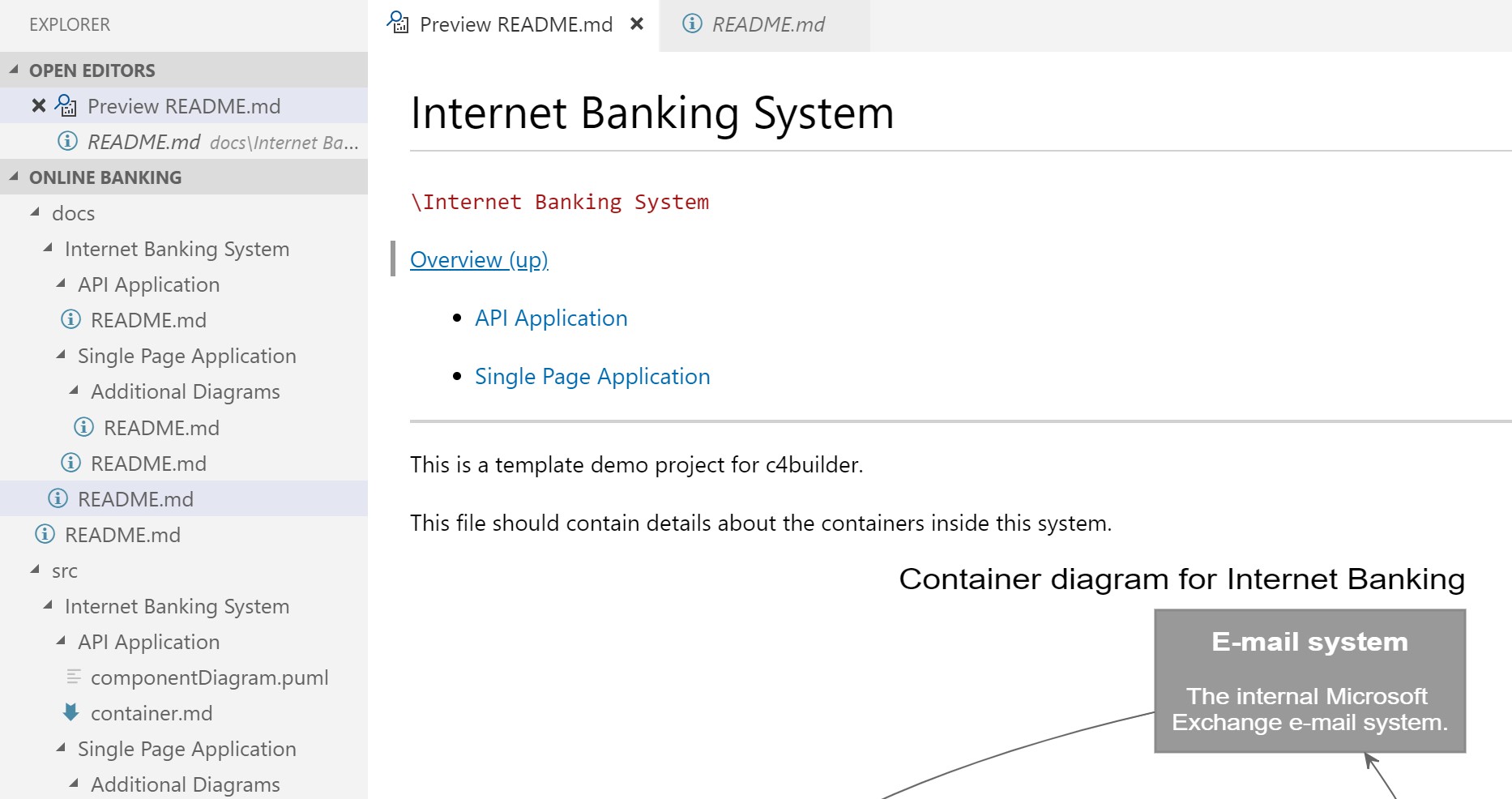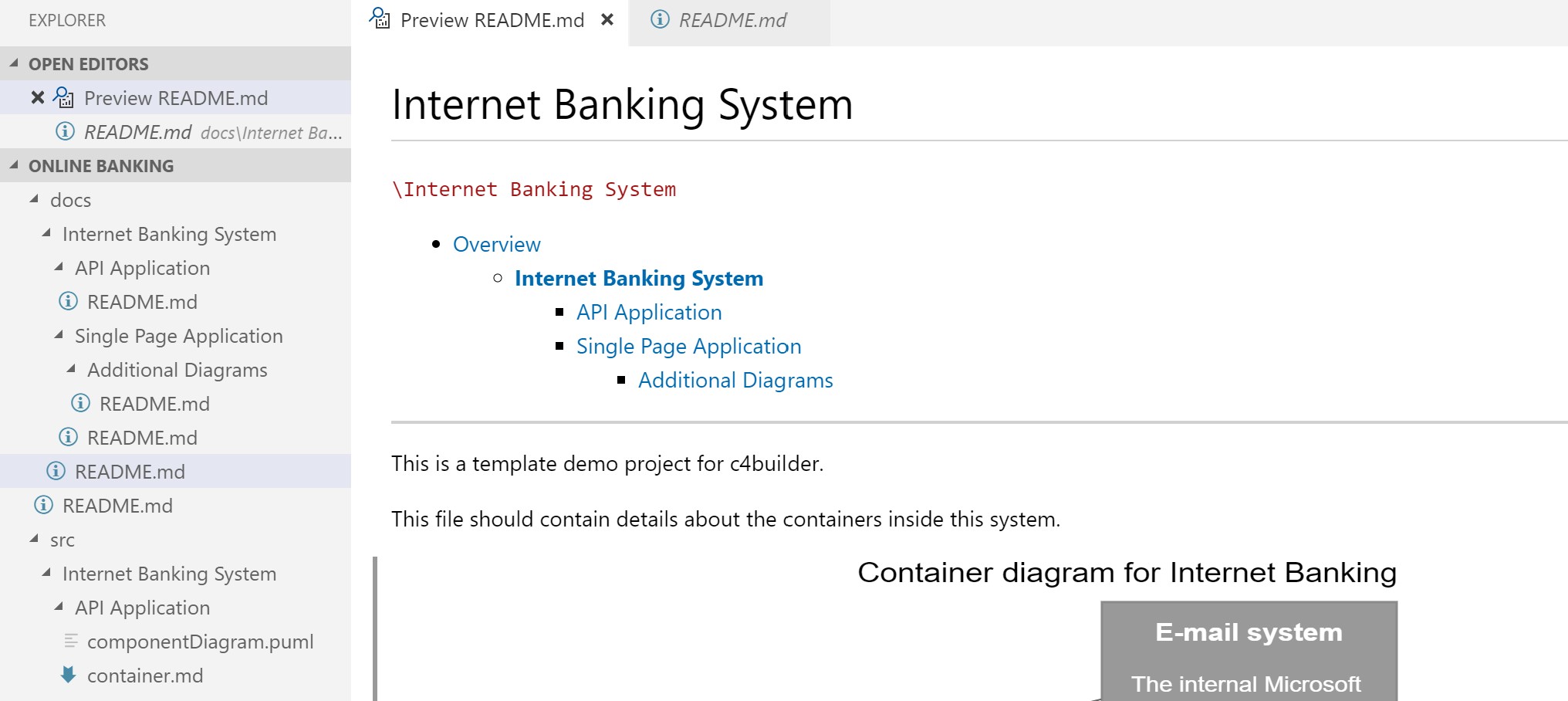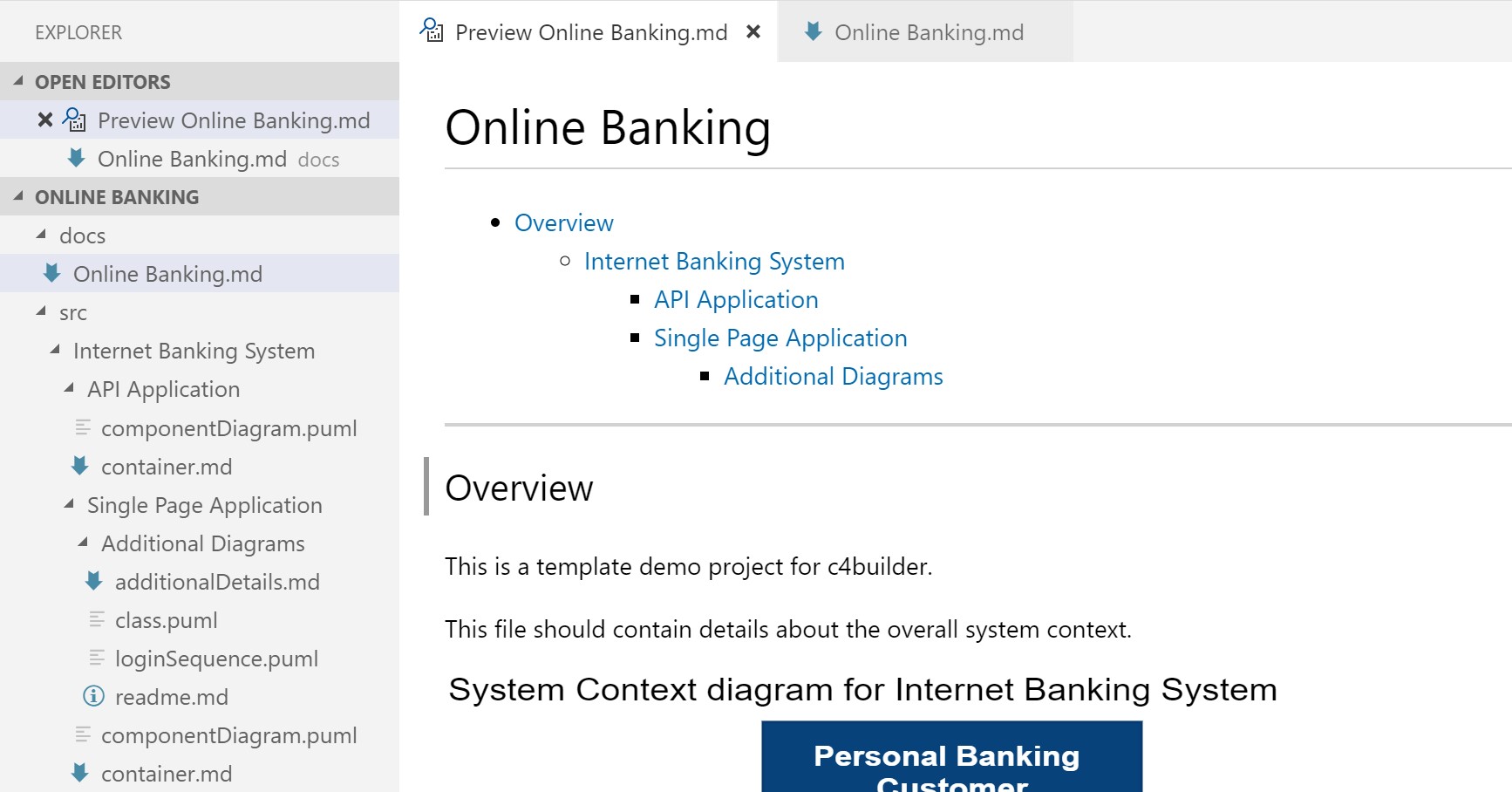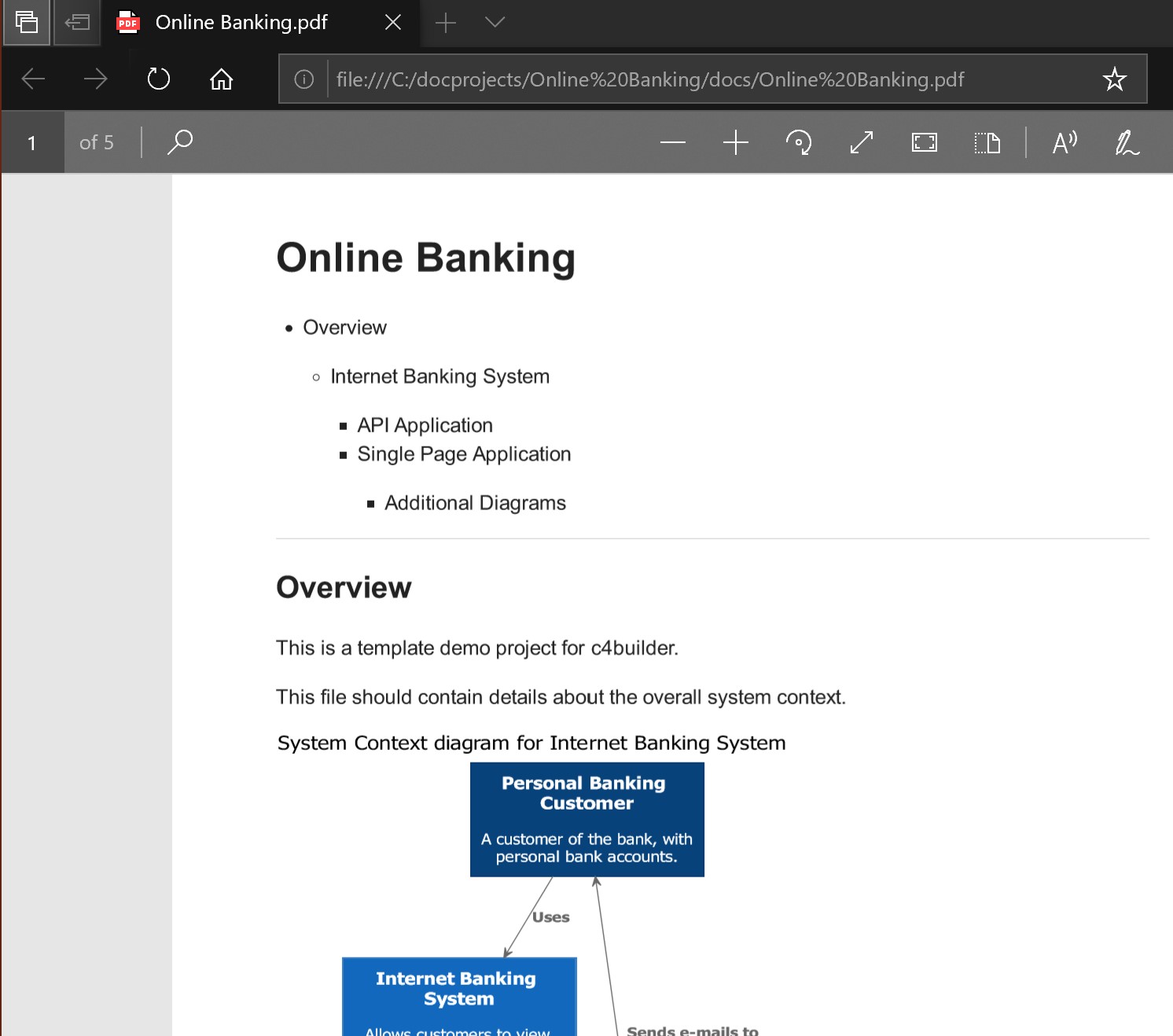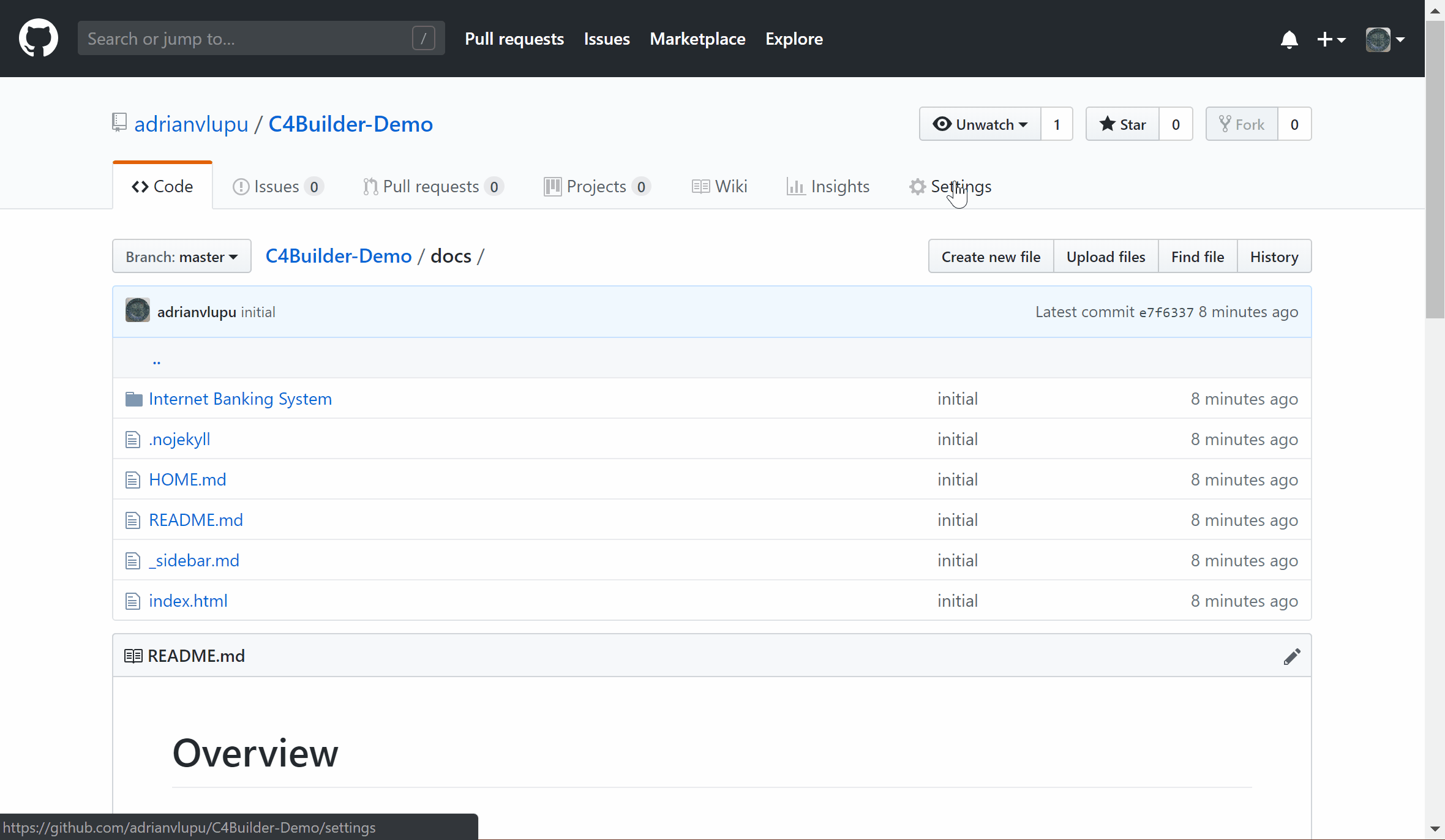c4builder is a lightweight nodejs cli tool for building, maintaining and sharing a software architecture project using only text.
The main idea behind the project is that a developer could use familiar tools to define software.
Combined with git any change to the architecture defined in those documents is easily traced. Pull requests, branches, cherry picks and all of the git features could be used as an easier way to keep track of the projects architectural changes.
It relies on these great projects :
-
PlantUml creates diagrams from plain text.
-
Markdown creates rich text documents from plant text.
-
C4Model the idea behind maps of your code
-
C4-PlantUML C4 syntax support for generating plantuml diagrams
-
Docsify creates a single page site based on markdown files.
-
vscode-plantuml plugin for visual studio code to view diagrams at design time
I strongly encourage people to check them out first but if you want to dive right in, the new project template should be easy to understand and edit.
npm i -g c4builder
The easiest way to get started is with the new project template.
c4builder new
cd project
c4builderA sample project is available at C4Builder-Demo.
PS C:\docprojects\Online Banking> c4builder --help
Usage: index [options]
Options:
-V, --version output the version number
new create a new project from template
config change configuration for the current directory
list display the current configuration
reset clear all configuration
site serve the generated site
-w, --watch watch for changes and rebuild
docs a brief explanation for the available configuration options
-p, --port <n> port used for serving the generated site
-h, --help output usage informationBy default, running c4builder will attempt to build the project.
If no configuration was set it will ask for it and then do the actual build. Running just c4builder after a configuration will no longer show the wizard.
To change the configuration after building for the first time just run c4builder config. The default will be the configuration set previously so you can just edit the options you are interested in.
The project consists of two main folders. The source folder and the destination folder.
Following the C4 model, folders inside the source represent Systems/Containers/Components or any other additional type of information regarding the software.
│ .gitignore
│ README.MD
├───docs # destination folder
└───src # source folder
│ context.md
│ context.puml
└───Internet Banking System
│ system.puml
│ system.md
├───API Application
│ container.puml
│ container.md
└───Single Page Application
│ container.puml
│ container.md
└───Additional Information
additionalDetails.md
class.puml
sequence.puml
class.1.mdThe destination folder is automatically generated by the build process and can have various formats. The folder can provide a drill down style view of the Systems/Containers/Components in different ways. Either by pushing it as a site to gitpages, using it as a navigable markdown directly in the repository or by generating pdfs and using the traditional mail.
The build process consists of parsing the folder structure and merging together all the information found in the markdown files and diagrams into a single file per folder.
The basic navigation, table of contents, local generation of images and their inclusion in the end documentation is automatically handled.
c4builder comes with a wizard for managing configuration for each project folder.
NOTE
Files starting with _ will be ignored during the build process
Diagrams can be placed at arbitrary positions by adding them to the markdown file like this: 
Using the configuration wizard you can choose any combination of outputs. By default all are enabled.
The output should have the same folder structure as the source. Each .md file inherits all the contents from the source .md files in that folder and appends either a link or the actual diagram images at the bottom/top of the file.
│ .gitignore
│ README.MD
├───docs
│ │ README.md
│ └───Internet Banking System
│ │ README.md
│ ├───API Application
│ │ README.md
│ └───Single Page Application
│ │ README.md
│ └───Additional Diagrams
│ README.md
└───src
│ ...The generated markdown files can be pushed to git and viewed directly as a readme.
-
basic navigation
The basic navigation comes in the form of a menu providing a link to the parent and descendants.
-
table of contents (default)
The table navigation always shows all entities and bolds the current one
Outputs into a single file containing all entities. It includes a table of contents and a 'go to top' link after each section.
The generated markdown file makes for an easy single page readme for the repository.
A fast way to pass around information regarding only one particular System/Container/Component
The easiest format to share the full documentation
After choosing to generate a docsify site, it can be viewed locally by running c4builder site and accessing http://localhost:3000;
The site is minimalistic including only a sidebar with the System/Container/Components hierarchy.
The sidebar is generated manually so that it only contains the main entities defined in the project in a hierarchical way.
By going to the github repository settings and enabling GitHub pages the site be pushed with ease and provide an overview to all people involved in the project without having to worry about which version of pdf file got sent when.
By default this option is disabled. The output will contain image files generated using the plantuml server.
If enabled, all images will be generated using the local copy of plantuml and will get added to the destination folder.
By default this is disabled. If enabled, the output will no longer include the actual diagrams but a link to the image file.
The current entity structure is inserted after the header
If defined, this css is used in the generation of the pdf files.
I would like to bind the build phase to the C4 model. It could parse the diagrams and know what Person/System/Component/Container is related to what and help with additional validation. Maybe even export to structurizr or vice versa.
The project is still in it's early phase and I intend on using it on some actual projects in order to find more use cases and fix bugs.
Partial build (image generation) #55 (MickeJohannesson)
Bugfixes
Diagrams at arbitrary positions #28 (Sjuanola)
Support for Ditaa Diagrams #56 (MickeJohannesson)
Resolved npm vulnerabilities
Latest plantuml jar file 1.2022.3.jar
Dockerfile #51 (craigwardman)
Search in site sidebar #48 (arifinoid)
Relative urls in TOC for multiple markdown files #9.
Fixed Processed 1/1..2/2 files bug.
Added another version of the PlantUML jar file.
Updated latest plantuml jar to 1.2021.7.jar #41 (pandasuit)
Allow input plantuml source files to use relative include statements to other plantuml files #42 (pandasuit)
Local image generation in sequence due to the jar failing with "dot executable not found".
Updated VSCode snippets and resolved npm audit issues
Docsify image plugin #20 (alefcarlos)
PlantUML 1.2020.17 #23 (RohanTalip)
Configurable PlantUML Server url #25 (jikuja), #29 (coryodaniel)
GitHub Action for running C4 Builder in CI #16 (hkdobrev)
Overloading the docsify template #27 (sju66)
Relative urls in TOC for multiple markdown files #9.
Fixed Processed 1/1..2/2 files bug.
Added another version of the PlantUML jar file.
Resolved npm audit issues
The projects generated now support PlantUML versioning
PlantUML jar files included
Solved the limation of including local images in the markdown files.
Updated the project template with the diagram descriptions from C4Model
Updated template to include the new Dynamic Diagram in C4-PlantUML and fixed npm audit issues.
Added the c4builder --watch option and some refactoring.
Pdf generation now uses puppeteer. There are no more scaling issues for high resolution displays. Used the css file from vscode-markdown-pdf.
Removed unused dependencies.
Thanks to howiefh for adding the charset option.
Updated template to include the new Deployment Diagram in C4-PlantUML and more info inside readme.md
node-plantuml accepted the pull request #29 so I changed the dependency back to the original repository.
Changed template to include the latest C4-PlantUML!include https://raw.githubusercontent.com/adrianvlupu/C4-PlantUML/latest/...
Switched from http-server module to express for serving the static site.
Added the option to place diagrams before text.
PlantUML recently switched to V1.2019.6 adding some breaking changes to !define and !definelong. You can still use them but when calling you have to add () method call (http://plantuml.com/preprocessing)
Considering they updated their server to use the new version, diagrams generated locally that display correctly won't work on the plantuml server and viceversa
Until the underlying node-plantuml package gets updated, I changed the dependency to the fork at https://github.com/adrianvlupu/node-plantuml.git
Also the !include directives on each template diagram point to the 1.2019.6 compatible version hosted at https://github.com/adrianvlupu/C4-PlantUML.
